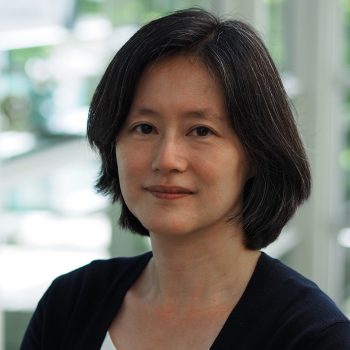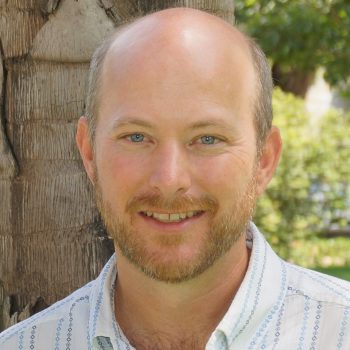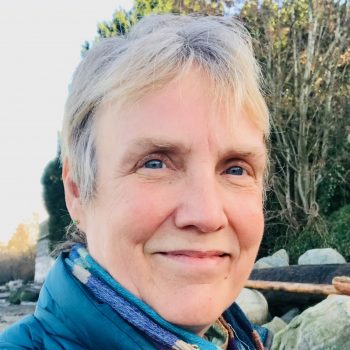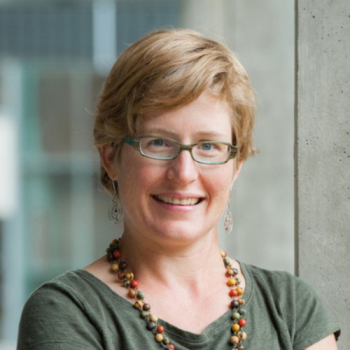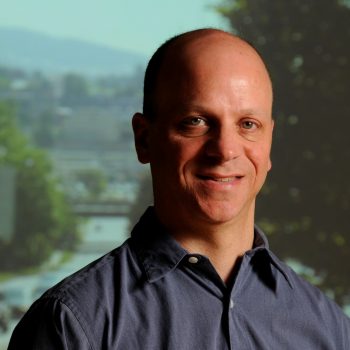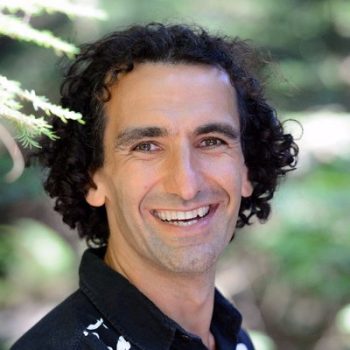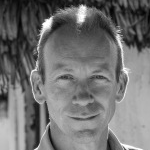Gunilla Öberg, Geneviève S. Metson, Yusuke Kuwayama and Steven Conrad. 2020. Conventional Sewer Systems are too Time-Consuming, Costly and Inflexible to meet the Challenges of the 21st Century. Sustainability 2020,12, 6518
Robin Harder, Rosanne Wielemaker, Sverker Molander, Gunilla Öberg 2020 Reframing human excreta management as part of food and farming systems. Water Research 175: 115601
Gunilla Öberg, Kevin Elliot and Annegaaike Leopold 2019 Science is Political But should Not be Partisan. Integrated Environmental Assessment and Management 16: 6-7.
Gunilla Oberg and Annegaaike Leopold 2019 On the role of review papers in the face of escalating publication rates – a case study of research on contaminants of emerging concern (CECs). Environment International 131: 104960
Robin Harder, Rosanne Wielemaker, Tove A. Larsen, Grietje Zeeman and Gunilla Öberg 2019 Recycling nutrients contained in human excreta to agriculture: Pathways, processes, and products. Critical Reviews in Environmental Science and Technology 49(8): 695-743
Sarah A. Mason-Renton, Marco Vazquez, Connor Robinson, Gunilla Öberg 2019 Science for policy: A case-study of scientific polarization, values, and the framing of risk and uncertainty. Risk Analysis 39 (6): 1229-1242
Gunilla Oberg and Alice Campell 2019 Navigating the divide between scientific practice and science studies to support undergraduate teaching of epistemic knowledge. International Journal of Science Education 41(2):230-247
Noureddine Elouazizi, Gunilla Oberg, and Gulnur Birol 2018 Learning technology-enabled (meta)-cognitive scaffolding to support learning aspects of written argumentation. PALE 2018 http://adenu.ia.uned.es/workshops/pale2018/
Bajracharya, S., Carenini, G., Chamberlain, B., Chen, K. D., Klein, D., Poole, D., & Oberg, G. 2018. Interactive Visualization for Group Decision-Analysis. International Journal of Information Technology & Decision Making 17(6): 1839–1864. DOI: 10.1142/S0219622018500384
Gunilla Öberg and Sarah A. Mason-Renton . 2018. On the limitation of evidence-based policy: Regulatory narratives and land application of biosolids/sewage sludge in BC, Canada and Sweden. Environmental Science & Policy 84: 88-96.
Genevieve S. Metson, Steve M. Powers, Rebecca L. Hale, Jesse s. Sayles, Gunilla Öberg, G., Graham K. MacDonald, , … & Alexander F. Bowman 2018. Socio-environmental consideration of phosphorus flows in the urban sanitation chain of contrasting cities. Regional environmental change, 8:1 387–1401
Klein, D. R., & Öberg, G. 2017. Using Existing Municipal Water Data to Support Conservation Efforts. Journal‐American Water Works Association, 109(7), E313-E319.
Gunilla Öberg and Margaret del Carmen Morales 2016. Biosolids are wicked to manage: Land application regulations in Sweden and B.C. Canada. WEF Residuals and Biosolids Conference, April 3-6, 2016, Milwuakee, Wisconsin
Susanne Rostmark, Manuel Colombo, Sven Knutsson, and Gunilla Öberg 2016. Removal and re-use of tar-contaminated sediments by freeze-dredging: a case study of a coking plant in northern Sweden. Water Environment Research 88(9):847-851
Daniel R. Klein, Ghazal Ebrahimi, Lucas Navilloz, Boris Thurm, and Gunilla Öberg 2014. Water Management at UBC. Background report for the project: Would it make sense to develop an integrated resource management strategy for UBC, using a water lens? Vancouver, BC: Program on Water Governance. Click here for a web-based version of the report.
Margaret del Carmen Morales*, Leila Harris and Gunilla Öberg. 2014. Citizenshit – The Right to Flush and the UrbanSanitation Imaginary. Environment and Planning A 46: 2816 – 2833
Gunilla Öberg, M. Gabriela Merlinsky, Alicia LaValle, Margaret Morales, and M. Melina Tobias. 2014. The Notion of Sewage as Waste – On Institutional Inertia and Infrastructure Change in Buenos Aires, Argentina and Vancouver, Canada. Ecology and Society 19(2)19
Per Bengtsson, David Bastviken and Gunilla Öberg. 2013. Possible roles of reactive chlorine II: Assessing biotic chlorination as a way for organisms to handle oxygen stress. Environmental Microbiology and Environmental Microbiology 15 (4): 991-1000
Brent C. Chamberlain, Giuseppe Carenini, David Poole, Gunilla Öberg, and Hamed Taheri 2013. A Decision Support System for the Design and Evaluation of Sustainable Wastewater Solutions. IEEE Transactions on Computer Science. Special issue on Computational Sustainability pp. 129-141
Gunilla Öberg, Louise Fortmann and Tim Gray 2013 Is interdisciplinary research a mashup? IRES Working Paper Series; No. 2013-2
Lauren Pickering, T. Andrew Black, Chanelle Gilbert, Matthew Jeronimo, Zoran Nesic, Juergen Pilz, Teresia Svensson, and Gunilla Öber., 2013. A Portable Chamber System for Measuring Chloroform Fluxes from Terrestrial Environments – Methodological Challenges. Enviromental Science and Technology 47 (24): 14298–14305
Jacqueline A. Belzile, and Gunilla Öberg 2012. Focus Groups. In: Measurements, Indicators, and Research Methods for Sustainability. Berkshire Encyclopedia of Sustainability 6/10.
Jacqueline A. Belzile and Gunilla Öberg 2012 Where to begin? Grappling with how to use participant interaction in focus group design. Qualitative Research 12 (4): 459-472
Malin Gustavsson, Susanne K. Karlsson, Gunilla Öberg, Per Sandén, Teresia Svensson, Valinia, S., Ives Thiry, David Bastviken, 2012. Organic matter chlorination rates in different boreal soils — the role of soil organic matter content. Environmental Science and Technology 46 (3): 1504–1510.
Margaret Morales and Gunilla Öberg, 2012.The Idea of Sewage as a Resource. An Introductory Study of Knowledge and Decision Making in Liquid Waste Management in Metro Vancouver, BC. Canada. UBC’s Program of Water Governance Report.
Gunilla Öberg, 2012. Qualitative and quantitative studies. In: Measurements, Indicators, and Research Methods for Sustainability. Berkshire Encyclopedia of Sustainability 6/10.
Öberg, G. and Bastviken, D. 2012. Transformation of chloride to organic chlorine in terrestrial environments: variability, extent and implications. Critical Reviews in Environmental Science and Technology 42:2526-2545
Gunilla Öberg, Louise Fortmann and Tim Gray 201X Is interdisciplinary research a mashup? In: Interdisciplinary progress in environmental science and management. (ed. Nicholas V.C. Polunin) Cambridge University Press. (accepted)
Molodovskaya, M., Warland, J., Richards, B.K., Öberg, G. and Steenhuis, T. 2011. Nitrous oxide emission from heterogeneous agricultural landscape: analysis of source contribution by eddy covariance and static chambers. Soil Science Society of America Journal 75: 5: 1829-1838
de Boer, W., Folman, L., Bastviken, D., Svensson, T., Öberg, G., del Rio, J. and Boddy, L. 2010. Mechanism of antibacterial activity of the white-rot fungus Hypholoma fasciculare colonizing wood. Canadian Journal of Microbiology Volume 56, Number 5, 1 May 2010 , pp. 380-388.
Öberg, Gunilla, 2011. Interdisicplinary environmental studies – a primer. Blackwell & Wiley.
Wibeck, V., Abrandt Dahlgren, M. and Öberg, G. 2010 Learning in focus groups: an analytical dimension for enhancing focus group research. In “Data Collection” W. Paul Vogt (Ed) SAGE Benchmarks in Social Research Methods. SAGE Publications.
David Bastviken, Teresia Svensson, Susanne Karlsson and Gunilla Öberg. 2009. Temperature sensitivity indicates that chlorination of organic matter in forest soil is primarily biotic. Environmental Science and Technology 43, 3569–3573.
Per Bengtson, David Bastviken, Wietse de Boer and Gunilla Öberg. 2009. Possible role of reactive chlorine in microbial antagonism and organic matter chlorination in terrestrial environments. Environmental Microbiology 11: 1330–1339,(published on line doi:10.1111/j.1462-2920.2009.01915.x)
Kai Chan and Gunilla Öberg with Emily Anderson, Brent Chamberlain, Erin Empey, Carys Evans, Sarah Klain, Jordan Levine, Megan Mach, Rebecca Martone, Cathryn Clarke Murray, Julia Reckermann, Jordan Tam, Natasha Sihota, Gerald Singh 2009 An Ecosystem Services Approach to Sustainability at the University of British Columbia. Report to UBC Sustainability Office.
Öberg, G. 2009. Facilitating interdisciplinary work: using quality assessment to create common ground. Higher Education 57, no. 4, pp. 405-415
Bastviken, D., Thomsen, F., Svensson, T., Karlsson, S., Sandèn, P., Shaw, G., Matucha, M. and Öberg, G. 2007. Chloride retention in forest soil by microbial uptake and by natural chlorination of organic matter. Geochimica et Cosmochimica Acta 71:3182-3192
Öberg, G. 2007. Praktisk tvärvetenskap – tankar om och för gränsöverskridande projekt (Interdisciplinarity in practice – thoughts concerning cross-boundary projects). Studentlitteratur.
Svensson T., Laturnus F., Sandén P., Öberg G. 2007 Chloroform in run-off water – a two-year study in a small catchment in south-east Sweden. Biogeochemistry 82: 139-151
Svensson, T., Sandén, P., Bastviken, B. and Öberg, G. 2007 Chlorine transport in a small catchment in southeast Sweden during two years. Biogeochemistry 82:181-199
Wibeck, V., Abrandt Dahlgren, M. and Öberg, G. 2007 Learning in focus groups: an analytical dimension for enhancing focus group research. Qualitative Research 7 (2): 249-267
Bastviken, D., Sandén, P., Svensson,T., Ståhlberg, C., Magounakis,M. and Öberg, G. 2006 Chloride retention and release in a boreal forest soil – effects of soil water residence time, nitrogen and chloride loads. Environmental Science and Technology 40:2977-2982
Lahsen, M. and Öberg, G. 2006. The role of unstated mistrust and disparities in scientific capacity – examples from Brazil. CSPR Reports. ISBN 91-25523-42-9
go to the top
Wibeck, V., Johansson, M., Larsson, A. and Öberg, G. 2005 Communicative aspects of environmental management by objectives – examples from the Swedish context. Env. Managment 37 (4):461-469
Lövbrand, E. and Öberg, G. 2005 Towards reflexive scientization of environmental policy. Environmental Science and Policy. 8(2):195-197
Öberg G, Holm, M. Parikka, M. Sandén, P. and Svensson, T. 2005. The role of organic-matter-bound chlorine in the chlorine cycle: a case study of the Stubbetorp catchment, Sweden. Biogeochemistry 75: 173–201
Öberg, G. and Sandén, P. 2005 Retention of chloride in soil. Hydrol Proc 19:2123-2136
Johansson, E., Xin, Z.B., Zhengyi, H., Sandén, P. and Öberg, G. 2004. Turn-over of organic chlorine in submerged paddy soil. Soil Use and Management 20:144-149.
Laturnus, L., Svensson, T. Wiencke, C. and Öberg, G. 2004. Ultraviolet Radiation Affects Emission of Ozone-Depleting Substances by Marine Macroalgae – Results From a Laboratory Incubation Study. Environmental Science and Technology 38: 6605-6609
do Nascimento, N.R, Nicola, S.M.C. Rezende, M.O.O. Oliviera, T.A. and Öberg, G. 2004. Pollution by hexachlorobenzene and pentachlorophenol in the coastal plain of São Paulo state, Brazil. Geoderma 121:221-232
Johansson, E., Sandén, P. and Öberg, G. 2003. Organic chlorine in deciduous and coniferous forest soil in southern Sweden. Soil Science 168:347-355.
Johansson, E., Sandén, P and Öberg, G. 2003. Spatial patterns of organic chlorine and chloride in Swedish forest soil. Chemosphere 52:391-397.
Karlsson, S.A. and Öberg, G. 2003. UV-light induced mineralization of organic matter bound chlorine in Lake Bjän, Sweden – a laboratory study. Chemosphere 52:463-469.
Rodstedth, M., Ståhlberg, C., Sandén, P. and Öberg, G. 2003. Chloride imbalances in soil lysimeters. Chemoshere 52:381-389.
Öberg, G. 2003. The biogeochemistry of chlorine in soil. In: The Handbook of Environmental Chemistry Vol. 3, part P. The Natural Production of Organohalogen Compounds (ed Gribble, G.), Springer-Verlag, pp 43-62.
Öberg, G. 2002. Old news about the chlorine cycle in soil. Science dEbate feb 21, 2002. (http://www.sciencemag.org/cgi/eletters/295/5557/985?ck=nck)
Öberg, G. 2002. The natural chlorine cycle – fitting the scattered pieces. Requisitioned review. Applied and Environmental Microbiology 58 (5): 565-581.
Abrandt-Dahlgren, M. and Öberg, G. 2001. Questioning to learn and learning to question: Structure and function of PBL scenarios in environmental science education. Higher Education 41:263-282.
Johansson, E., Ebenå, G., Sandén, P., Svensson, T. and Öberg, G. 2001. Organic and inorganic chlorine in Swedish spruce forest soil: Influence of nitrogen. Geoderma 10: 1-13.
go to the top
Johansson, E., Krantz-Rülcker, T., Zhang, B.X. and Öberg, G. 2000. Chlorination and biodegradation of lignin. Soil Biology and Biochemistry 32:1029-1032.
Neidan, V., Pavasars, I., and Öberg, G. 2000. Chloroperoxidase-mediated chlorination of aromatic groups in fulvic acid. Chemosphere 41: 779-785.
Abrandt-Dahlgren, M. and Öberg, G. 1999. Structure and function of PBL scenarios in environmental science and education. In: Här och Nu! Hård af Segerstad, H. (ed). CUP rapport 5. ISBN 91-7219-625-4.
Abrandt-Dahlgren, M. and Öberg, G. 1999. Brief scenarios instead of authentic cases in environmental science education – does it work? Presented at AuDes 5e conference on environmental education. Zürich, Schweiz, april 15-17, 1999.
Hjelm, O., Johansson, E. and Öberg, G. 1999. Production of organically bound halogens by the litter-degrading fungus Lepista nuda. Soil Biology and Biochemistry 31:1509-1515.
Kokalj, S. and Öberg, G. 1999. Miljö till salu. I: Medier och modernisering. En antologi om utbildningsprogram och samhällsförändring (red. Bengt Sandin). Etermedierna i Sverige. pp 281-296.
Svensson, T., Bastviken, D., Fredriksson, A. and Öberg, G. 1999. Problem-oriented laboratory work in environmental education: Experiences from a new master’s programme at Linköping University, Sweden. Presented at AuDes 5e conference on environmental education. Zürich, Schweiz, april 15-17, 1999. http://www.uns.umnw.ethz.ch/auDes/
Öberg, G. 1998. Chloride and organic chlorine in soil. Acta hydrochimica et hydrobiolobiologica 26:137-144.
Öberg, G., Johansen, C., and Grön, C. 1998. Organic halogens in spruce forest throughfall. Chemosphere 36:1689-1701.
Öberg, G. and Grön, C. 1998. Sources of organic halogens in spruce forest soil. Environ. Sci. Technol. 32:1573-1579.
Öberg, G, Brunberg, H. and Hjelm, O. 1997. Production of organically bound halogens during degradation of birch wood by common white-rot fungi. Soil Biology and Biochemistry 29:191-197.
Öberg, G. and Bäckstrand, K. 1997. Praktik och ideal i svensk försurningsforskning. VEST- tidsskrift för vetenskapsstudier-Journal for Science Technology Studies 1: 23-39.
Hjelm, O., Borén, H. and Öberg, G. 1996. Detection of halogenated organic compounds in soil from a Lepista nuda (wood blewitt) fairy ring. Chemosphere 32:1719-1728.
Öberg, G. and Bäckstrand, K. 1996. Conceptualization of the acidification theory in Swedish environmental research. Environmental Reviews 4:123-132.
Öberg, G., Nordlund, E. and Berg, B. 1996. In situ formation of organically bound halogens during decomposition of Norway spruce needles – effects of fertilization. Canadian Journal of Forest Research 26:1040-1048.
Öberg, G., Börjesson, I. and Samuelsson, B. 1996. Production and mineralisation of organically bound halogens in relation to soil pH. Water, Air and Soil Pollution, 89:351-361.
(Change of surname from Asplund to Öberg in 1996)
Asplund, G. 1995. Origin and occurrence of halogenated organic matter in soil. In: Grimvall, A. and deLeer, E.W.B. (Eds.) Naturally-Produced Organohalogens. Kluwer Academic Publishers, Dortrecht. pp. 35-48.
Hjelm, O. and Asplund, G. 1995. Chemical characterization of organohalogens in a coniferous forest soil. In: Grimvall, A and deLeer, E.W.B (Eds.). Naturally-Produced Organohalogens. Kluwer Academic Publishers, Dortrecht, the Netherlands. pp. 105-111.
Hjelm, O., Johansson, M-B. and Öberg-Asplund, G. 1995. An analysis of the sources and distribution pattern of organically bound halogens in soil from a coniferous forest soil. Chemosphere 30:2353-2364.
Asplund, G. and Grimvall, A. 1994. Organohalogen compounds in nature. Environ. Sci. Technol. 28:402A.
Asplund, G., Grimvall, A. and Jonsson, S. 1994. Determination of the total and leachable amounts of organohalogens in soil. Chemosphere 28:1467-1475.
Asplund, G., Christiansen, J.V. and Grimvall, A. 1993. A chloroperoxidase-like catalyst in soil: detection and characterization of some properties. Soil Biology and Biochemistry 25:41-46.
Asplund. G. 1992. On the origin of organohalogens found in the environment. Ph. D. Thesis. Linköpings universitet studies in Arts and Science, nr 177. ISBN
Hedrén, J. and Asplund, G. 1992. Den politiska ekologin – en granskning av dess överdeologiska funktion och förutsättningar VEST- tidsskrift för vetenskapsstudier 4/1992: 4-12.
Asplund, G. and Grimvall, A. 1991. Organohalogens in nature, more widespread than previously assumed. Environ. Sci. Technol. 25:1346-1350.
Grimvall, A and Asplund, G. 1991. Natural halogenation of organic macromolecules. Finnish Humus News. 3:41-51.
Lassen, P., Christiansen, J.V., Carlsen, L., Asplund, G. and Grimvall, A. 1991. Halogen lability of halogenated humic acids. Finnish Humus News. 3:53-58.
Asplund, G., Grimvall, A. and Pettersson, C. 1989. Naturally produced adsorbable organic halogens (AOX) in humic substances from soil and water. Sci. Tot. Environ. 81/82:239-248.
